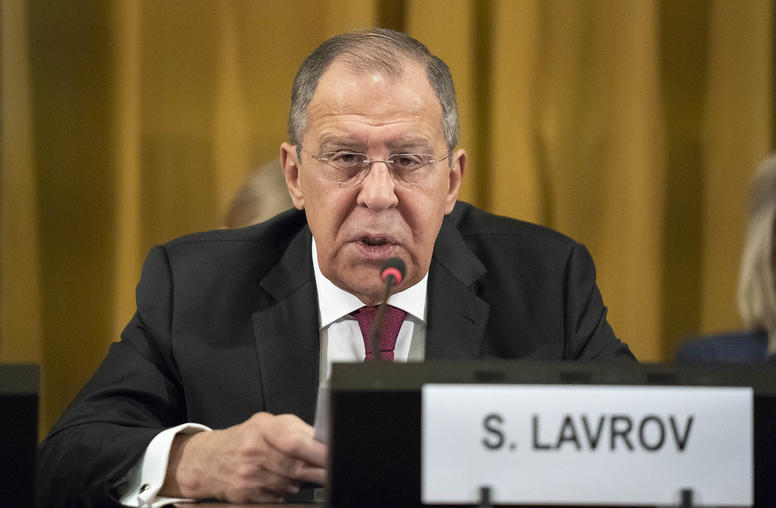Governments and rebels alike are readily using – and often abusing – standard justice mechanisms like trials or amnesties during conflicts, even as part of their military strategy. And because they’re using the terminology of Western-style rule of law, the international community generally has failed to carefully examine these practices for their longer-term impact. New research, supported in part by a grant from the U.S. Institute of Peace, documents the trend and explores its potentially devastating effect on efforts to rebuild societies after war.
The research by Cyanne Loyle, a former assistant professor at West Virginia University and incoming faculty member at Indiana University, spanned 204 conflicts that occurred from 1946 to 2011 and catalogued 2,205 instances where antagonists have used traditional mechanisms of transitional justice during a conflict. In 76 percent of those conflicts, at least one process was used; in 65 percent, two or more mechanisms were identified.
Loyle presented her findings alongside a panel of rule of law experts at USIP on June 16. The research involved collecting data on the use of justice mechanisms during violent conflicts; reviewing peace agreements, cease-fire agreements, memorandum of understandings and truth commission reports; and then conducting field work in three countries – Uganda, Nepal and Turkey – over the course of a year to examine the rationales for using such processes.
“The justice system is basically another arm [of] the state … Judges are soldiers without arms, but with big [law] books to carry.” – Henri Barkey, Woodrow Wilson International Center for Scholars
The procedures were “almost exclusively implemented to advance political rather than legal goals,” Loyle said. “There’s very little discussion in the three country case studies or the global cross-national data I’ve looked at that suggests that countries are really trying to advance their legal system and address the underlying causes of the conflict” in using these justice mechanisms, she said.
Loyle’s research indicates that both governments and rebel groups instead employed justice mechanisms as a device in their conflict toolbox. These processes included human rights trials – the most common mechanism by far, as well as truth commissions, reparations, amnesties, purges and exile procedures that were reminiscent of the post-communist lustration processes in Eastern Europe.
Such mechanisms traditionally are lauded by international assistance agencies and organizations as methods to work out issues that create conflict and to restore justice with the goal of breaking the cycle of conflict. In some cases, the principles of judicial independence were applied genuinely, as in the case of India’s commissions of inquiry to investigate the roots of communal violence, Loyle said.
“In the aftermath of communal riots in India, the government has routinely formed commissions of inquiry to investigate these crimes and submit final reports,” wrote Warisha Farasat, a lawyer in India, in a May 2012 article on the OpenSecurity web site. “However … their recommendations have been largely ignored. This has created an environment of impunity, and fueled further violence in the society.”
Loyle’s research suggests the generally positive understanding of these mechanisms by international assistance organizations must be reconsidered when they are applied illegitimately during conflicts. The abuse, manipulation or politicization of justice by authorities or opposing forces during conflict can cause citizens to lose faith in justice systems of any kind. As justice gets a bad rap, governments can seize on that perception to delegitimize internationally-implemented justice processes and avoid prosecution for violations after a conflict ends.
In the Central African Republic, for example, the international community is helping develop a hybrid-tribunal process. Ena Dion, a USIP [program officer for rule of law, said Loyle’s findings suggest it will be important to consider the history of how such mechanisms have been used in the CAR and what that indicates about public attitudes toward these processes.
“Their use can, in fact, erode trust in the legal system as a fair means of dispute resolution,” Dion warned. Neglecting to study the use of legal mechanisms during conflict does a disservice not only to the people, “but also the peacebuilding work needing to be done,” she said.
A Method to the Manipulation
Loyle’s research showed that there’s a pattern to which mechanisms were used and when. Trials, for instance, were more common in democracies, whereas amnesties were more broadly used across the board. Justice mechanisms were most common in mid-intensity conflicts of 1,000 to 4,999 battle deaths but less likely to be used by a government in small or large conflicts, where a purely military response is deemed a more effective strategy. And, rebel groups were most likely to engage in these activities when fighting a democracy rather than an autocracy or some hybrid.
Loyle’s case studies in Uganda, Turkey and Nepal underscored these patterns. In Uganda, for instance, one “couldn’t separate out the justice strategy from the military strategy—they were very much interwoven and they were seen as holistic as far as how to defeat the Lord’s Resistance Army,” Loyle reported.
What did this mean for government leaders seeking victory? When their strength was at its peak against opponents, officials would feel comfortable using punitive measures such as prosecutions, giving the impression that they were holding perpetrators accountable and, in the process, possibly peel off more insurgent leaders. When the government side was losing ground militarily, however, it tended to resort to conciliatory measures such as amnesty offers, demobilization programs and victim reparations to address grievances.
The international community has “the tendency to romanticize justice as an end,” USIP Senior Program Officer Elizabeth Murray said. But, “it’s also a means, in many of these circumstances.”
Long-Term Impact
The abuse of justice as a means of advancing power during a conflict can drive individuals in search of remedies to other, less desirable mechanisms. For example, the tactics in Turkey have engendered severe mistrust towards the judiciary, particularly among minority groups, said Loyle. The courts authorized under anti-terror legislation enacted in the 1990s restricted civil liberties and employed tactics such as arbitrary detention, according to human rights organizations like Human Rights Watch and government bodies like the European Union.
These courts disproportionally targeted the ethnic Kurdish population, failing to distinguish the minority group as a whole from the armed separatist group the Kurdistan Worker’s Party, known as the PKK, which the government considered a terrorist organization. Such actions widened the rift between the Kurdish population and the central government, and accelerated support for the more militarized elements of the separatist movement.
The government was determined to “prosecute, root out and challenge” the PKK, Loyle said. Sham trials were a way to effectively “disappear” individuals while maintaining a veneer of a legitimate justice system with the international community.
“The justice system is basically another arm [of] the state,” said Henri Barkey, who was Bernard L. and Bertha F. Cohen Chair in International Relations at Lehigh University in Pennsylvania before taking a position as director of Middle East programs at the Woodrow Wilson International Center for Scholars on July 1. “Judges are soldiers without arms, but with big [law] books to carry.”
In Nepal, the Maoist rebels conducted a number of “people’s courts” to try members of the government who they believed committed human rights violations during the civil war that raged from 1996 to 2006. However, this mechanism was not evenly applied across the country and a number of crimes went unreported. Today, the government is eschewing the International Criminal Court and other external involvement intended to address grievances and enable reconciliation, on the justification that trials already took place.
The United Nations High Commissioner for Human Right’s Nepal Conflict Report stressed as a “core message” that “transitional justice mechanisms are an important part of the transitional justice process but should complement criminal processes and not be an alternative to them” [emphasis added]. There is thus large public resistance to the government of Nepal’s rationale, because many cases of abuse have gone unreconciled.
Loyle’s findings recommend first, supporting civil society’s push for judicial accountability, respect for human rights and rule-of-law in these cases, and second, strengthening the independence of the judiciary.
Digging for Deeper Justice
A third recommendation of the research is for the International Community to dig more deeply into the political motivations behind these processes and call out manipulations. Only then will these processes serve the rule of law – as well as the ultimate objective of lasting peace. Increased scrutiny of justice processes during conflicts also can provide valuable insight into conflict dynamics, information and perspective that might help achieve a more durable peace.
Dion cautioned that, while there are challenges, and even danger, to employing justice procedures during a conflict, rule of law cannot wait for peace. Vulnerable populations especially may need legitimate judicial processes even while a war is going on.
Moreover, if the international community ignores abuses of justice processes during violent conflict, the resulting dearth of legitimacy makes any rebuilding of a society and its institutions exponentially difficult after the war is over. In addition to increasing the cost of post-war reconciliation and reconstruction in terms of time and scarce resources, the most important harm is to the citizens who can’t benefit from a revived justice system soon enough.
As the international community seeks peaceful resolutions to violent conflicts like those in Afghanistan, Ukraine and Nigeria, it needs to pay more attention to the uses and abuses of so-called justice, lest it undermine the potential for success in rebuilding once the wars end.
Hanne Dalmut is a program specialist at USIP.



